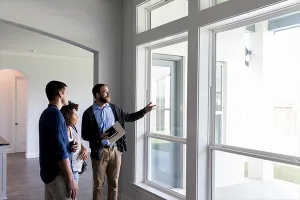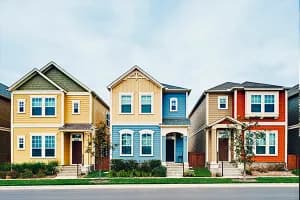Entering the housing market remains elusive to many potential first-time buyers. Increasing new housing construction is one solution to this problem, which could alleviate the housing inventory crisis. At the same time, there is a dearth of inventory; home prices have jumped even in a high-interest rate environment, making the dream of homeownership completely out of reach for many. Potential first-time buyers are often also saddled with student debt, childcare costs, and rent, which can hold them back from saving for a home.
Today’s first-time home buyers have reached an all-time high median age of 38. To reach homeownership, first-time buyers need higher incomes. What happens to those who cannot reach homeownership today? Home builders have seen this data and have recognized an opportunity: built-for-rent (BFR).
BFR is the concept of new single-family homes constructed for the intent of renting. While there has been growth in new home sales and construction activity, multifamily home construction has also grown in recent years. However, an apartment may not have enough square footage for some renters. A yard for a pet, space for a home office, and room for a new baby are within reach with this concept. Renting a single-family home in a new housing community may also come with amenities not seen in the typical apartment, such as walking paths, pickleball courts, or even shared gardens.
In calculating data from the U.S. Census Bureau’s Survey of Construction Data, one can see that, year over year, BFR single-family housing starts grew to 90,000 units in 2024 from 60,000 units in 2021.

However, while the number of units rose, the share of all housing starts is an important number to watch. The share of BFR single-family homes grew from 5% in 2021 to 9% in 2024. However, the share has declined from 10% in 2023.

All regions saw annual growth in BFR housing. When looking at the data by region, there was a notable two-year growth in BFR single-family homes in the Northeast—which is now 13% of the market, up from 3% in 2021. The Midwest also saw a rise from 5% in 2021 to 8% in 2024. The increase in the South was smaller, at 9%. The West has the smallest share at 7%.

Will the market for this type of construction continue to increase? It is possible, if home buying continues to be out of reach for young adults. They will need a bigger space for growing families or even just a yard for a dog to play in. BFR may be their solution—even as a temporary solution, while they save for their down payment for their first home.









